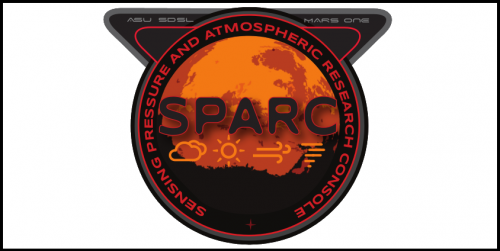Students design Martian weather forecasting tool

Cold and windy with a chance of dust storms, that's what a weather forecaster might say about Mars. But if we want our colonization plans of the Red Planet to be successful, a better understanding of Martian weather patterns is needed. A team of students of the Arizona State University (ASU) has developed a tool named Sensing Pressure and Atmospheric Research Console (SPARC), to make it possible, and they aim to put it on Mars to conduct a series of weather experiments. "If you want to go on vacation you always check the weather. Otherwise you would end up in Alaska with a Hawaiian shirt and shorts!" Brody Willard of the Sun Devil Satellite Lab (SDSL) at ASU told astrowatch.net. "With that in mind, we designed a payload that would not only record data about Mars atmosphere, but also records video of the Martian environment. That way we don't just have both a visual and data component, but when looking over the data we can actually see the event that the data is telling us about." The project is participating in the Mars One University Competition and if it wins, it will be send as a payload to Mars, onboard the Dutch company's mission to the Red Planet.
SDSL is a student organization at ASU. The team consists of ASU students from various backgrounds. These members include both undergraduate and graduate students studying electrical, aerospace, and mechanical engineering, as well as astrophysics and planetary sciences.
SPARC is a very basic system consisting of The RocketCam system (provided by Ecliptic Enterprises), heater, pressure sensors, and a couple temperature sensors all wrapped up in an insulating layer that will be used to track Martian weather patterns. "Our payload is designed to study the weather patterns on Mars by recording video and atmospheric data when changes in the Martian environment occur," Willard says. "We will be able to characterize the weather on Mars and hopefully in the future that will lead to the ability to predict the weather patterns on the Red Planet. That will allow us to better prepare for major weather events, such as dust storms."
The system would operate by being positioned toward the Martian landscape, ready to observe once any natural phenomena occurs. Special software being developed at ASU will then be used to determine when something of interest is happening in the system's field of view. Once something like a cloud, dust storm, dust devil, or maybe even a moon passes within the field of view of the camera, SPARC will power on and record the event. It will then send the video, along with associated pressure and temperature readings, to the Mars One Lander to be sent back to Earth.
"The camera for this mission would only take up about 8 cubic inches of space, weight about 1 pound (0.5 kg), and take 1080P picture and video at around 30 frames/second all while operating in the harsh Martian environment," says team member Bryan Sonneveldt. "The structure container would help protect the camera from the dust and harsh temperatures with a small heater inside. At the same time motion sensing programming would be used to only take video when something was happening, such as a dust devil, cloud movement or any activity of interest."
Once the data has been returned to Earth, planetary scientists from around the world can use the footage to begin the process of characterizing Martian weather patterns, improving the quality of life of future Mars colonists.
Source: Astrowatch.net





















